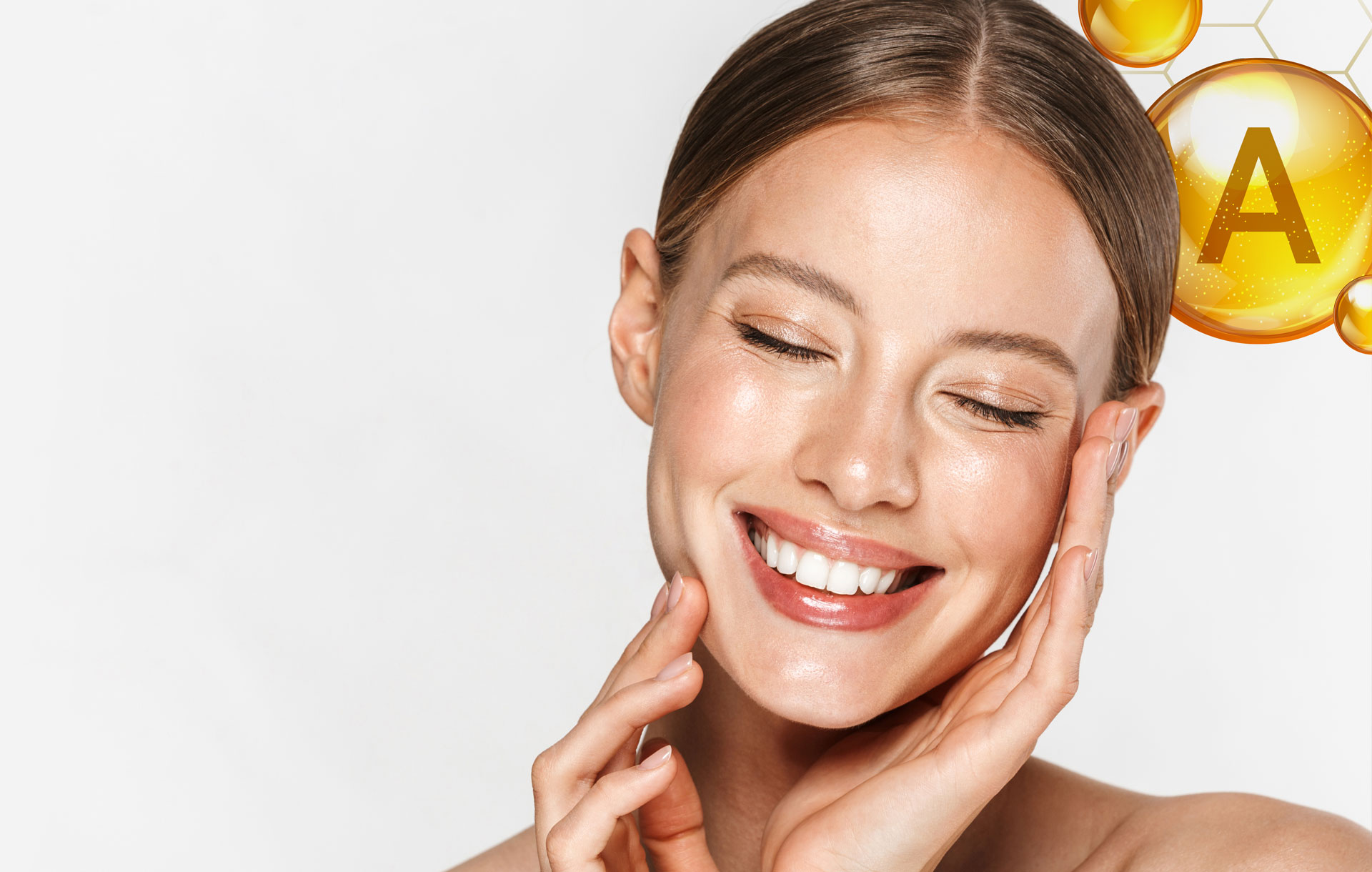Understanding vitamin A derivites in skin care
In esthetics, there are several primary derivatives of vitamin A used including retinol, retinyl palmitate or vitamin A palmitate and retinaldehyde. A process referred to as encapusulation has been used most successfully by inventors and researchers as a way to provide even more value to the substance. Encapsulation is used with retinol and retinaldehyde in cosmeceutical formulations to enhance delivery, stability and efficacy.
RETINOIDS
Retinoids in general are vitamin A derivatives, which the skin converts to retinoic acid where it then becomes active. This encompasses several chemical compounds including retinol (alcohol form), retinal (aldehyde form), retinoic acid (acid form) and retinyl ester (ester form), which are collectively referred to as retinoids.
Topical retinoids are beneficial in treating acne and aging skin. In skin rejuvenation, retinoids are used as re-youthing chemicals, where vitamin A is absorbed through the skin, increasing the rate of cell turnover and collagen production, creating a more youthful appearance.
RETINYL PALMITATE
Retinyl palmitate is a combination of retinol and palmitic acid. More than 80 percent of the vitamin A typically found in skin is stored as retinyl palmitate. It’s a DNA regulator that provides gradual non-irritating skin resurfacing, reduces wrinkles and smoothes skin texture, improving the signs of aging. It also promotes collagen synthesis and pigment control.
RETINOL
Retinol has been used for decades in over-the-counter preparations and is widely used by estheticians, reaping profound benefits for most skin types. It’s one of the animal forms of vitamin A. It is a diterpenoid and an alcohol that is converted to other forms of vitamin A, and not to be confused with retinal. It has a two-step conversion to retinoic acid when applied to the skin. Encapsulation is a proficient way to deliver retinol to the skin, and research has shown the elevated benefits of using this method for skin rejuvenation.
Retinol stimulates the growth of new blood vessels, which improves circulation, increasing the oxygen supply to the skin and giving it a healthy glow. These properties make it an effective re-youth ingredient—targeting lines, wrinkles and pigmentation caused by UV damage and aging, as well as normalizing keratinization and increasing enzyme activity. Retinol also produces excellent results for rosacea and sensitive skin types.
RETINALDEHYDE
Retinaldehyde is the newest and one of the most dynamic vitamin A derivatives to the industry. It’s similar to retinol in the sense that it’s a pro-drug that converts to retinoic acid. Where it differs, however, is that it’s less irritating to the skin and has one less step involved in the conversion to retinoic acid.
The challenge with retinaldehyde has been stability, but through evolutionary encapsulation processes, this is a stable precursor to retinoic acid, and its pro-youth and clear skin benefits are boosted. It also produces the least amount of skin irritation of all vitamin A derivatives, making it a choice for all skin types. This characteristic often makes it easier to combine with other acne treatments such as AHAs, BHAs and benzoyl peroxides. Encapsulated retinaldehyde performs closest to retinoic acid in topical formulations where it provides powerful wrinkle reduction and prevention.
It also has been shown to bring UVA damaged skin back to health, which has major implications on skin repair and re-youth programs. Plus it works to stimulate cellular cohesion and eliminate bacteria.
Since encapsulated retinaldehyde is less irritating to the skin, it proves superior in treating acne. Some research has also shown this ingredient contains antimicrobial characteristics, which enables it to provide support against P. acnes.
VITAMIN A SKIN CARE
Vitamin A is found in two primary forms in food: retinol, the form absorbed when eating animal food sources, and carotenes, namely beta-carotene. The latter requires an enzyme in the body to convert the compound to retinal. The vitamin can be found in many foods including meat sources, dandelion greens, carrots, broccoli, sweet potatoes, kale, spinach and pumpkin, to name a few.
In cosmeceuticals, vitamin A can be found in a variety of strengths in creams, serums, acids and enzymes. When blended with other ingredients such as skin-building organic stem cells, peptides or micro algae, vitamin A derivatives will produce a more gentle approach to the regenerating benefits while providing hydration and skin strengthening.
Similarly, the exfoliation and regenerating properties of vitamin A derivatives are enhanced when combined with ingredients like salicylic acid, flower acids and lactic acid (L).
Vitamin A derivatives are unquestionably effective in reducing the signs of aging caused by sun damage. The rapid cell turnover, increase in oxygen supply and improved circulation that occurs with vitamin A derivatives results in smoother, stronger and glowing skin.
Clients are generally receptive to the idea of incorporating vitamin A derivatives into their skin rejuvenation program. In the past, the only trepidation was for those who have sensitive skins, but that has changed with the introduction of less irritating varieties like encapsulated retinaldehyde. These are also beneficial for those who may not be able to tolerate other acids and enzymes, but want the exfoliation and regenerating benefits of a corrective re-youth program. For those who are on a more intense anti-aging program, vitamin A works well to support the skin between peels and other corrective treatments.
While vitamin A proves essential in skin rejuvenation and correcting acne, it is necessary to adhere to certain precautions. For example, don’t use it when skin is exposed to the sun. In the treatment room, be sure to finish with a good mineral-based SPF and educate clients on the importance of staying out of the sun following treatment. For home care, retinoid formulas are best used at night, when degradation by light is minimal, and always protect the skin with SPF. Be sure to educate clients on best practices when using any retinoid formulation.
When used properly, these time-tested vitamin A ingredients will prove a necessary component in your skin care toolbox. Not only is it effective in treating acne, it also enhances the re-youth process when rejuvenation is the goal.













